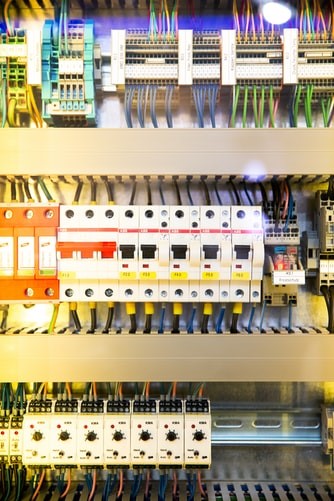Has it ever crossed your mind that as technology evolves, we become more dependent on it? Our homes are filled with electronic devices, smartphones, TVs, laptops, tablets, gaming consoles and more. We try to convince ourselves that we can live without these electronic devices, but they play such a big part in our daily lives.
All of these devices have the same thing in common, they all cost quite a bit. And along with these devices, we also have household appliances. From washers and dryers to microwaves, we’ve come to rely on these expensive appliances.
The common factor of all of these smart devices and basic necessities that we use on an everyday basis is electricity. It powers our life. But is electricity dangerous?
Well, anything that exceeds its limitations can turn dangerous. For electricity, if there’s an increase in the regular electrical current that floods into our homes you can expect a power surge. A power surge occurs when the voltage going into our devices and appliances goes beyond a normally safe level, it’s an electricity overload.
Of course, not all types of power surges result in a complete destruction of our devices, but there’s a good chance of our expensive electronics being damaged. With that in mind we’ve decided to share exactly how you can protect your home from a power surge.
Verify Your Home’s Electricity Levels
Computer equipment is designed for 120 volts of Alternating Current (AC) power that is supplied at 60 Hertz. However, when you’re provided electricity from your local utility provider the standard power supply may fluctuate.
As a power facility expands, be mindful to verify that the local power grid is still supplying proper electrical baselines. Understand that fluctuations affect electrical components which can lead to data loss and power failures.
So how can you verify your electricity levels? You can use a multi-meter tool to read the voltage on an AC power outlet. If the baselines differ by two percent or less, you should consider investing in a power conditioner like an uninterruptible power supply (UPS).
However, if the baselines have a difference of three percent or more, you should contact your local utility or a licensed electrician.
Invest in Home Surge Protection
It’s common to invest various forms of insurance to protect valuable assets, so why not consider investing in surge protection. Let’s face it, all of our devices and household appliances aren’t exactly cheap.
Of course, you should consult a licensed electrician who can help with the installation of a home surge processor, or they can advise on how to go about it. This particular suppressor will be connected to the service panel of your residence and will act as a gateway for the electrical supply.
As soon as the electricity reaches a high level, the suppressor will automatically shut the power down and redirect it towards the ground wire. If you simply want to project your phone line or cable, you can opt for a smaller whole-house unit.
You should consider FirstEnergy’s electrical surge coverage, as they cover most electric devices. Call FirstEnergy at 1-866-987-4305 to get more information on their services and coverage.
Protect Electronic Devices that are Sensitive to a Surge
Some of our electronic devices are at a higher risk to power surges, such as our laptops, microwaves, and many more. And even if you have installed a suppressor, these devices can still be susceptible to damage during a power surge.
Which is why you might consider getting additional protection for devices that you’re more concerned about. Who wants a fried computer? We’re sure that type of damage is heavy on the wallet, especially if it’s not under warranty.
Three power surge safety measures to consider:
- Surge stations for your cable and phone lines
- An Uninterrupted Power Station or UPS. This will create a stable electrical supply and it comes with a battery in case the power goes out.
- Power strips
You need to understand that it’s important to have a proper route for any form of additional electricity being supplied in the house. This is usually something that’s linked to your house’s wiring. Typically, there ought to be a path that’ll guide the excess electricity away from the residence.
Stay Alert and Be Smart
Ultimately, you should be smart about where you plug your appliances and devices. Make sure you’re not putting too much load on a single socket.




![[pii_email_c5d8a719da077be3aed4] Error Solved](https://www.perunity.com/wp-content/uploads/2021/07/pii_email_c5d8a719da077be3aed4-Error-Solved-464x290.png)